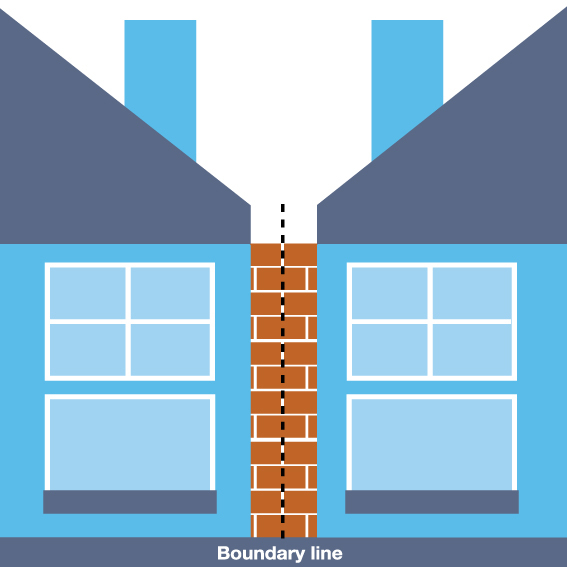
Read also: CAUSES FOR EXTINGUISHMENT OF THE EASEMENT OF RIGHT OF WAY
-
Party Wall is a wall at the dividing line of estates; co-ownership governs the wall.
-
The cost of repairs and construction of party walls shall be borne by all the owners of the lands or tenements having the party wall in their favor, in proportion to the right of each.
-
Any owner may exempt himself from contributing to this charge by renouncing his part-ownership, except when the party wall supports a building belonging to him.
Legal easements are those which can be enforced by law and, therefore, may be established even against the will of the owner of the servient estate. Legal easements may have for their objects either public use, in which case the easement is called “public legal easement,” or the interest of private persons, in which case the easement is called “private legal easement.” An example of a legal easement is the easement of party wall.
Party Wall is a wall at the dividing line of estates. Co-ownership governs the wall.
Under the New Civil Code:
The existence of an easement of party wall is presumed, unless there is a title, or exterior sign, or proof to the contrary:
- In dividing walls of adjoining buildings up to the point of common elevation;
- In dividing walls of gardens or yards situated in cities, towns, or in rural communities;
- In fences, walls and live hedges dividing rural lands.
It is understood that there is an exterior sign, contrary to the easement of party wall:
- Whenever in the dividing wall of buildings there is a window or opening;
- Whenever the dividing wall is, on one side, straight and plumb on all its facement, and on the other, it has similar conditions on the upper part, but the lower part slants or projects outward;
- Whenever the entire wall is built within the boundaries of one of the estates;
- Whenever the dividing wall bears the burden of the binding beams, floors and roof frame of one of the buildings, but not those of the others;
- Whenever the dividing wall between courtyards, gardens, and tenements is constructed in such a way that the coping sheds the water upon only one of the estates;
- Whenever the dividing wall, being built of masonry, has stepping stones, which at certain intervals project from the surface on one side only, but not on the other;
- Whenever lands inclosed by fences or live hedges adjoin others which are not inclosed.
In all these cases, the ownership of the walls, fences or hedges shall be deemed to belong exclusively to the owner of the property or tenement which has in its favor the presumption based on any one of these signs.
The cost of repairs and construction of party walls and the maintenance of fences, live hedges, ditches, and drains owned in common, shall be borne by all the owners of the lands or tenements having the party wall in their favor, in proportion to the right of each.
Nevertheless, any owner may exempt himself from contributing to this charge by renouncing his part-ownership, except when the party wall supports a building belonging to him.
Alburo Alburo and Associates Law Offices specializes in business law and labor law consulting. For inquiries, you may reach us at info@alburolaw.com, or dial us at (02)7745-4391/0917-5772207.
All rights reserved.
SUBSCRIBE NOW FOR MORE LEGAL UPDATES!
[email-subscribers-form id=”4″]

